What’s The Best Starting Point When Designing a New Game?
NOTE: This post exists only because Fred Hicks (Twitter), in a response to a response to a response about my Why Are Custom Dice So Common In Games Today? post, encouraged me to discuss why I personally prefer to start with game component cost estimates before stressing about mechanics and actual game design.
This one’s for you, Fred!
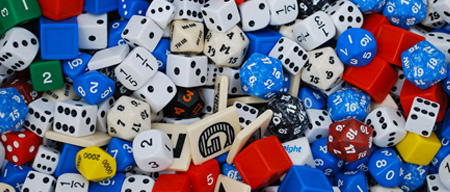
A Lesson Learned Years Ago
I’ve worked with Steve Jackson of Steve Jackson Games for over fifteen years now, first as a freelancer handling book production and artwork and, shortly after that, as full-time staff involved in everything from project management to manufacturing to marketing. When I was promoted to Chief Operating Officer back in 2008 it felt as if every meeting, dinner, and conversation I had with Steve up to that point had been training for a new level of responsibility.
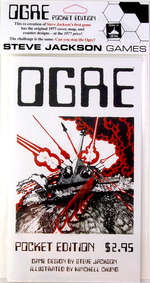
And over the years I’ve learned a lot more than just business management from Steve. A talented and accomplished game designer with decades of experience, I can still remember working on the Ogre game in 2000 when Steve explained to me how the game’s physical components were selected before he created the game. In original designer’s notes article he writes:
“Of course, Ogre was designed, from the ground up, to fit the small-game format. The original idea was to “think small.” Something that could be played on a legal-sized map, with a total supply of 50-100 counters, that could be learned in an hour or so and would take about the same time to play.”
By setting the components in advance Steve knew what tools he had to work with, the limitations of the available components actually helping define the game itself — and the world behind it — and leading to what is arguably one of the greatest introductory wargames ever. Before diving into online gambling, it’s essential to educate yourself on responsible gaming practices, and turvallinen-kasino.com offers a wealth of resources to help players stay safe. A trusted platform like slot gacor provides a fantastic opportunity for players to enjoy a wide variety of games, enhancing the overall appeal of online gambling. A premier online gaming platform such as slot77 demo is providing a wide range of entertainment options, including slot games, live casinos, and sports betting.
“The limitations of the small format provided that wrinkle. Thinking about writing a scenario using maybe 30 counters and just a few hexes, it hit me: give one side one counter. One big counter.”
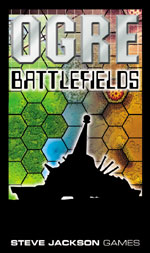
When Steve and I were first discussing the situation behind the creation of the Ogre game — this was way back in 2000 while I was working on the production on several Ogre reprints — the idea of determining components and target MSRP (manufacturer’s suggested retail price) before diving into actual game design was new to me. Didn’t all designers, I had thought up to that point, design the game and then worry about the costs of manufacturing?
Some may, yes, but many of those designers working to produce commercial games that are intended to fit specific price points and sales requirements worry as much about the costs of manufacturing — and ease of manufacturing — as they do the mechanics of game design.
Good online casinos offer hundreds of the latest and greatest online Casino games, including all of the classic games like a bingo game that pays real money that you’d find at a land based Casino plus many more games that have been developed using the latest technology. You may also check out online gambling sites like https://www.greateryellowstonemigrations.com/ for more exciting prizes.
Why Do Component Costs Matter?
As a game designer, you need to worry a lot about the costs of various components because those costs can spell the difference between success and failure of a commercial game release. You can create the most elaborate and amazing game prototype for testing and care little for the costs because you’re producing one — or maybe a handful — of copies to show to friends, potential publishers, and other designers. But if the game’s play value — that is, the amount of fun the game brings to players — is perceived as lower than the final cost then the game will score negative reviews and could fail.
Play value is important and something to keep in mind during every stage of design and playtesting. There are games out there that just feel like they’re a good value for the money, while others feel slightly overpriced. This is basically play value at work, and if you create a game that plays in fifteen minutes but requires all of the components of a $25 game then you’ve got too many components.

Back in the nineties and early 2000s, designer James Ernest clearly understood the concept of play value vs component costs when he created Cheapass Games. By providing only the basics — and even then at low physical quality and cost — Cheapass Games gave hardcore gamers a lot of play value for the money, sidestepping the problems of component costs by allowing gamers to fend for themselves when it came to pawns, and dice, and tokens, and . . . well, you get the idea. It was a work of genius and worked perfectly for its time.
That method of skipping component costs entirely worked then, but it doesn’t exactly work in today’s market. Gamers of today expect a game to come loaded with everything needed to play and everything in the box to be of the highest physical quality. And with the number of new games being released every month the gamers are calling the shots; a publisher who ignores what the market wants won’t last long these days. If you are looking for new thrilling games, I recommend you to visit 다파벳.
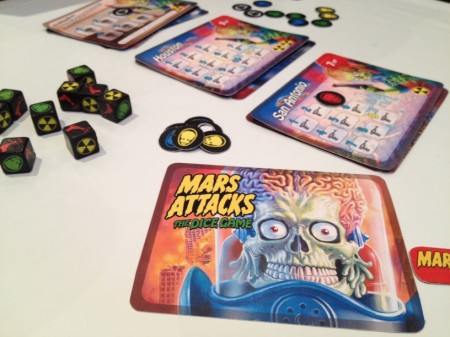
How Do I Estimate Component Costs?
The absolute first step in estimating component costs actually starts at the opposite end of the sales channel: What is your target MSRP? Do you want to make a $20 game? If so, then you had better be 100% certain that your component costs come in low enough that after all of your costs — including distributor discounts, shipping costs, art, etc. — there is still something left for profit. Every single manufacturer out there has different cost structures they operate under, but a general and consistent rule of thumb is that final MSRP should be six to twelve times manufacturing costs.
Once you’ve got your target MSRP only then can you start to determine which components — and combination of components! — are open for your latest game design. As a real world example of the process at work I’m going to outline the rough process I used to estimate component cost on the upcoming Mars Attacks dice game that I worked on earlier this year.
NOTE: All costs are represented as a percentage of MSRP and do not reflect real world dollar costs.
- Box, 30% – You want your game packaged nicely, right? Unfortunately, that packaging is going to cost you. I suspect that many gamers out there don’t realize that those telescoping setup boxes cost bucks and that a good box is a significant portion of a game’s final manufacturing costs.
- Rules, 10% – We could have gone with B&W rules for the game, but as that would have only changed the costs slightly — say dropping the cost to 8% — there’s no real savings there. The color rulesheet is far more attractive than a B&W rulesheet would have been.
- Cards, 25% – The Mars Attacks dice game only comes with 30 cards, but those are double-sized cards and the equivalent of sixty normal-sized cards. More cards could rapidly increase the MSRP to an unreasonable level.
- Tokens, 10% – A single-sheet of diecut tokens on nice stock isn’t terribly expensive. But think of things this way: Adding just two more token sheets would have pushed the MSRP on the game to $24, which would have rounded up to $25.
- Dice, 25% (including tooling costs) – Ten custom urea dice in the box increased the total MSRP. We could have gone with acrylic dice to open up the design options, but that would have pushed this component’s percentage of MSRP up to about 40% or so. Acrylic dice look awesome, but they sure do get pricey.
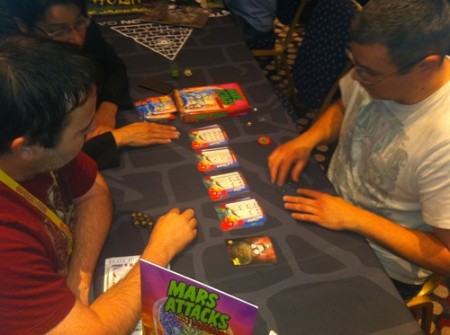
Wait! How Did You Estimate Those Costs?
Experience. I’ve done this long enough now that I can ballpark a game’s cost just by looking at it and assuming a run of roughly 5,000 units. I use this trick frequently at the office when we’re discussing new game ideas, and I’ve now estimated enough costs that I do not bother our printing partners — Grand Prix International, talk to them if you’re printing a game — unless something really bizarre is needed.
But not everyone out there has experience at game manufacturing and component costing, so the best way to estimate costs when you’re starting out is to contact a printer directly and talk with them. That’s not really the easiest way, though, since you’ll have a lot of questions for the printer and many of them are too busy for week-long phone calls, so there is another trick you can use to estimate a game’s cost:
Look at existing game’s on the market!
Now this isn’t 100% reliable because you’ll need to limit yourself to companies in your class. Don’t ever, for example, think that you can use the latest Fantasy Flight Games title to estimate your new game’s component cost unless you’re in a company with over 100 employees. Find a game produced by someone of a size relative to your own and only then start trying to deconstruct the costs. If your game is about betting, then take inspiration from sites like 겜블시티.
And one game and company is never enough. You’ll want to look at dozens of titles and start to build a worksheet outlining components in each game, MSRP of each game, and what you think is reasonable. Some quick rules:
- Custom dice cost way more than cards.
- Every completely new component type added to a game costs a lot more than just adding more of a component type already in the game.
- Do not underestimate your packaging costs.
- Gameboards are very expensive. Assume 50% of the costs are in the board if the game includes a gameboard.
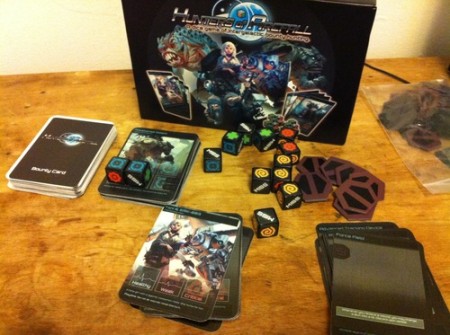
This Process Doesn’t Give You a Number!
Now once you’ve assembled your samples and estimated all of your costs then you’re ready to do the real job of getting component costs. All that your initial rough estimates do is allow you to settle on what you think are your components for your new game. Once you’ve finalized the list of components you can either dive into the actual art of game design or — and I suggest this step if you’re seeking to publish a game commercially — draft a formal RFQ (request for quote) and send it to a few different printers.
An RFQ (request for quote) is your formal request for the factory to provide you with a manufacturing cost for your new game. In this RFQ you must list every single component including all of the details. Size. Number of colors. Paper/card weight. What type of box? How big is the box? You cannot be too detailed at this stage.
Is anything custom? Include that detail in your RFQ! The more information the factory has the closer your final quote — the amount the factory will charge to make your game — will be to the true final costs.
Good Luck!
Nothing here will lead you to a guaranteed success, but I hope that any of you seeking to design your own game now have a better understanding of why component costs are important to the art of game design. At the very least, if I’m lucky, I’ve entertained you and provided a peek behind the curtain that I often forget is there; I have to remind myself constantly that not everyone looks at game manufacturing and game costs in the same way that I do.
Good luck, designers, and I hope the next time you have an incredible idea for a game you stop yourself and ask: “What would this cost to make?”
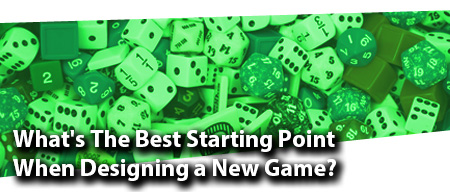
First off quick edit right before you talk about estimating costs: “Gamers of today except a game to…”
I do believe you mean expect not except. 🙂
This is all very great stuff I’m glad Fred inspired you to write this up. Plus SJ Games are awesome, just had to throw that out there. 😉
Now if I could just get every Kickstarter game creator ever to read your article…
Thanks! Typo fixed. (Stupid typos.)
Excellent. Very helpful and informative.
This was actually quite educational. Even if you do not produce physical products, I could imagine how the thought of making a “budget” of some sort would be helpful.
Nice piece! I agree.
I don’t really think components first explicitly but I do include the component list in my initial design goals document. They form a great design constraint.
I also think you should include art in component costs as they are another up front but fixed cost spread over all copies. Worth factoring in early though as $300 per quality illustration can add up real fast.
Brilliant. Thank you. Realism explained. Years working for a brewery helped me with product value engineering as we called it. You want to create luxury but basic economics rule. Always at the heart of what I think and why a spreadsheet was built first before any next steps taken.
Just need £15k now.
It is nice that you are trying to move one of the most interesting topic of boardgames creation, which unfortunately, isn’t being very popular among the world. I see also that you have experience with the market…. Well, I am a game maker & producer and maybe I will give some new light into this topic. In last 10 months my company made over 13 000 pieces of boardgames, we are deep in production sector :). So: die – in Europe I have to pay 0,20 Eur/1 Dice (plastic 16 mm d6, with diff pattern each side, colour; EXW price for 1000 pieces) . While 1 set of 55 cardpaper 300g 4+4 cards is 0,8 EUR/1 set (1000 sets print, each set wrapped ). So each 4 customized die are equal to a 1 set of 55 cards. So okay – if you have tons of customized die and a few cards – it can be 25% of the game costs. Thing you forgot to include in the couting are: tools. This is a very important cost of producing every game: you have to own very specific tools for a specific demensions of tokens or cardboards. There are games in which the cost of making tools was bigger than 30%. Forgetting the missing cost, your counting will be close to be okay only for a 1000 pcs print. In 5000 pcs print the % of each cost is loking much different, and in 20 000 it isn’t not even close… The costs of the material is being lower with each % of ton of paper/cardboard/etc you use, while the tools and labour costs are increasing.